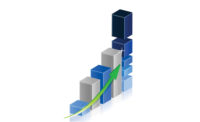Nate Donnay is the director of dairy market insight at StoneX Financial Inc. He has been applying his interest in large complicated systems and statistical analysis to the international and U.S. dairy markets since 2005.
Exporting U.S. dairy is going to get harder before it gets a lot easier. Europe, the largest exporter of dairy products, is facing a recession and a tough winter for consumers. The expectation is that dairy demand will suffer just as milk production in the region has started to improve. That will push more of Europe’s milk supply onto the world market and create headwinds for U.S. exporters. But longer-term, milk production growth in the European Union (EU) and New Zealand (NZ) looks constrained by tightening environmental regulations, which will open new opportunities for the United States.
In 2022, U.S. dairy exports are on track for a record year with milk equivalent exports up 4.1% on top of record exports last year. We’re on track for record high cheese, whey protein isolate (WPC), and lactose exports with nonfat dry milk (NFDM) likely experiencing the second highest year on record. As expected, we’ve seen a shift with imports by China down after surging in 2020/2021, and imports by other countries rebounding as their economies have reopened and dairy prices have fallen to more affordable levels.
U.S. exports have also been helped by tighter milk supplies in the rest of the world. EU-27+UK milk production peaked in August of 2021 and has been trending down since then. The weakness has been driven by rising input costs and adverse weather, but the biggest driver seems to be farmer reluctance to expand in the face of tightening environmental regulation and negative consumer attitudes toward animal agriculture.
Milk production in New Zealand peaked in July of 2021 and has also been trending lower. July 2021 also marked the first month that limits on synthetic nitrogen fertilizer went into effect. Despite profitable margins, tighter environmental regulation and poor weather has been holding New Zealand milk production back and there isn’t much optimism about a long-run rebound.
With milk production in our largest competitors constrained, the long-run export outlook for the U.S. is very good, but we need to get through the short-term first. Energy costs in Europe have spiked with Goldman Sachs estimating that the higher energy prices could cost consumers and industry an additional 2 trillion euros over the next year with the average household energy costs hitting 500 euros, or $498, a month. Various EU governments have announced a combination of direct payments to consumers and price caps to try and soften the blow, but so far the announced spending only adds up to roughly 530 billion euros, well short of covering the increased energy costs. The weaker domestic demand inside of Europe will result in more dairy products looking for a home outside of the bloc in early 2023.
Europe isn’t the only place that will be facing tougher economic conditions in early 2023. Central banks around the world are raising interest rates in an attempt to slow inflation or to defend their currencies. That is expected to slow economic growth and potentially push a number of countries, including the U.S., into recession. Slower economic growth will reduce demand growth for dairy products globally, making it harder for all exporters to find a home for their products in the early part of the year.
But recessions will eventually end, and the weather will turn warmer, reducing the budget stress on European consumers. That should drive an improvement in domestic consumption, tightening up the available supplies for the export market. The U.S. is well positioned to fill that demand with milk supplies that are not facing the same constraints as the EU and NZ.
This material should be construed as market commentary, merely observing economic, political, and/or market conditions, and not intended to refer to any particular trading strategy, promotional element, or quality of service provided by the FCM Division of StoneX Financial Inc. (“SFI”) or StoneX Markets LLC (“SXM”). SFI and SXM are not responsible for any redistribution of this material by third parties, or any trading decisions taken by persons not intended to view this material. Information contained herein was obtained from sources believed to be reliable, but is not guaranteed as to its accuracy. Contact designated personnel from SFI or SXM for specific trading advice to meet your trading preferences. These materials represent the opinions and viewpoints of the author, and do not necessarily reflect the viewpoints and trading strategies employed by SFI or SXM.



